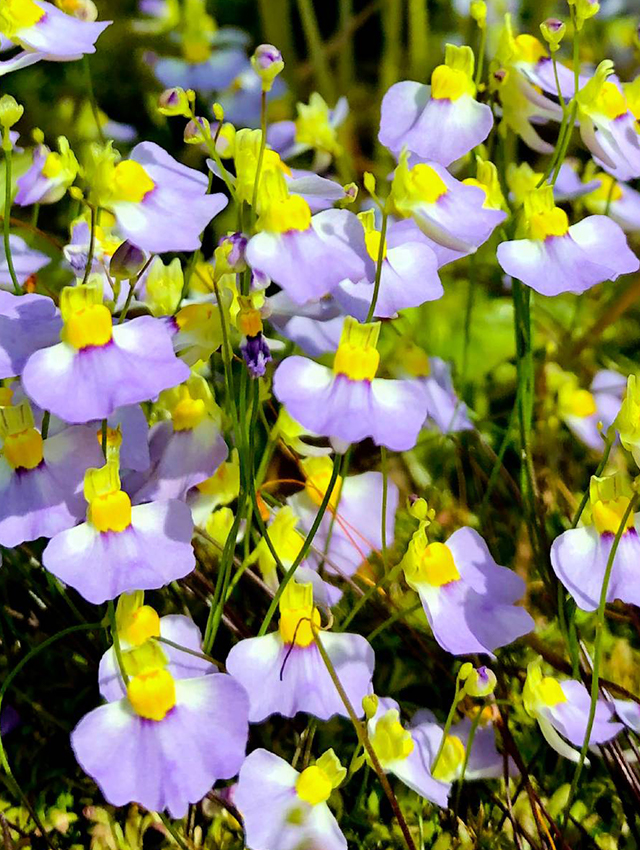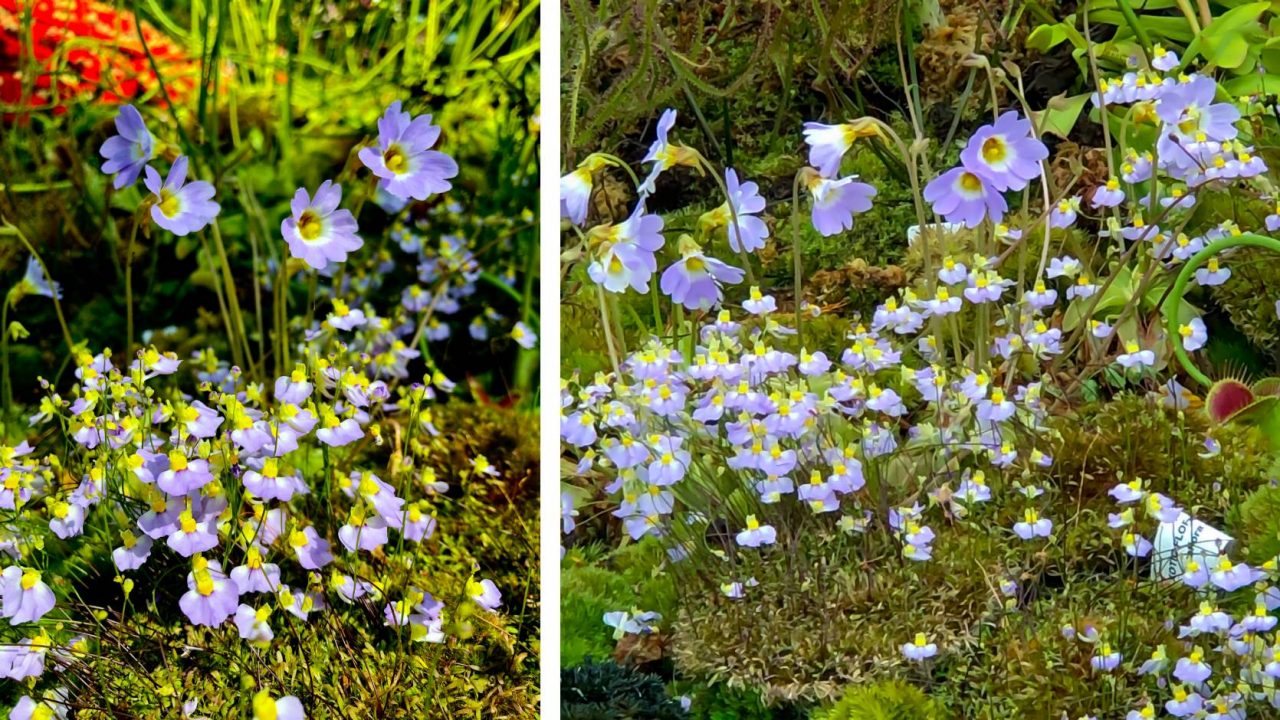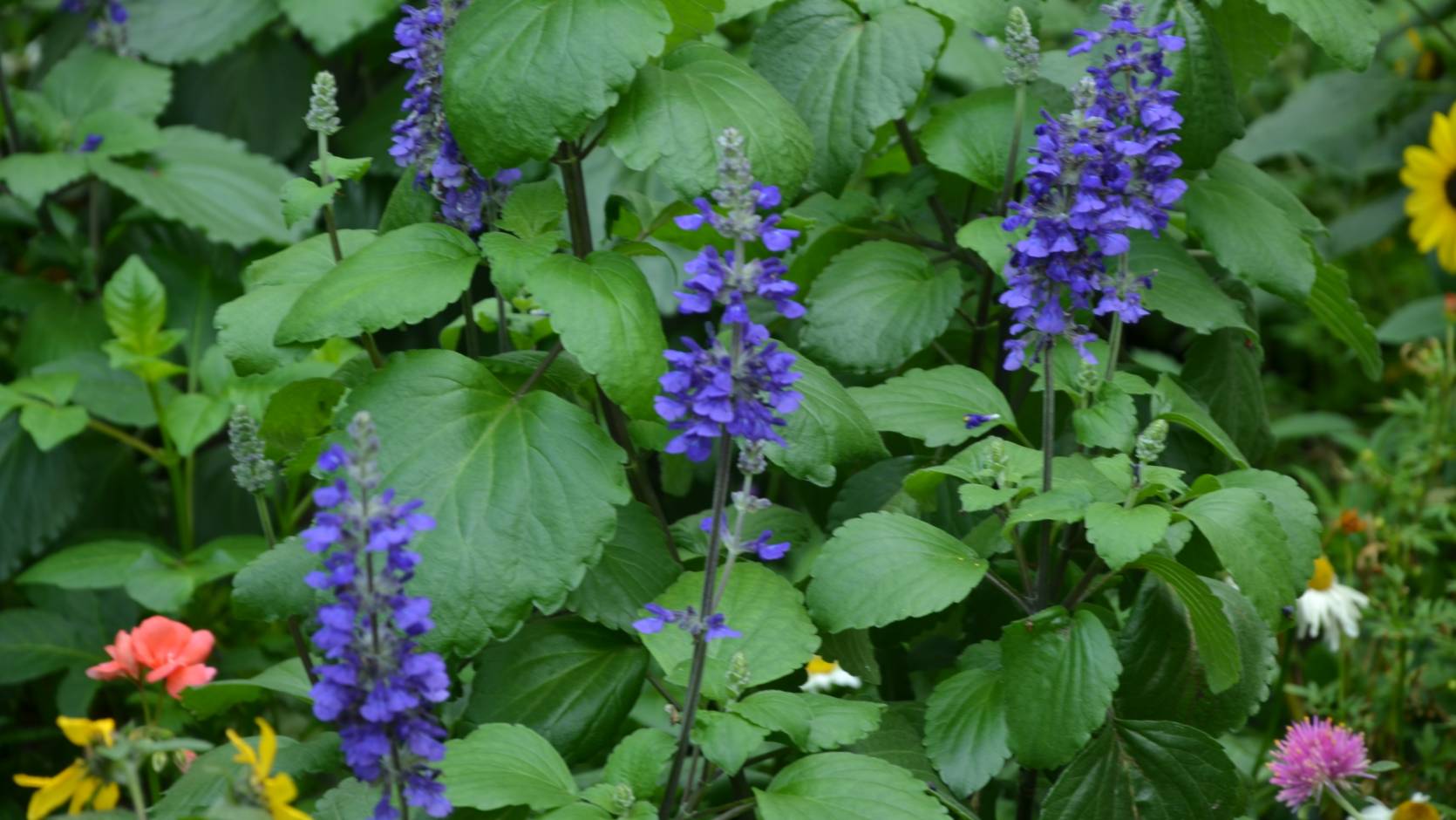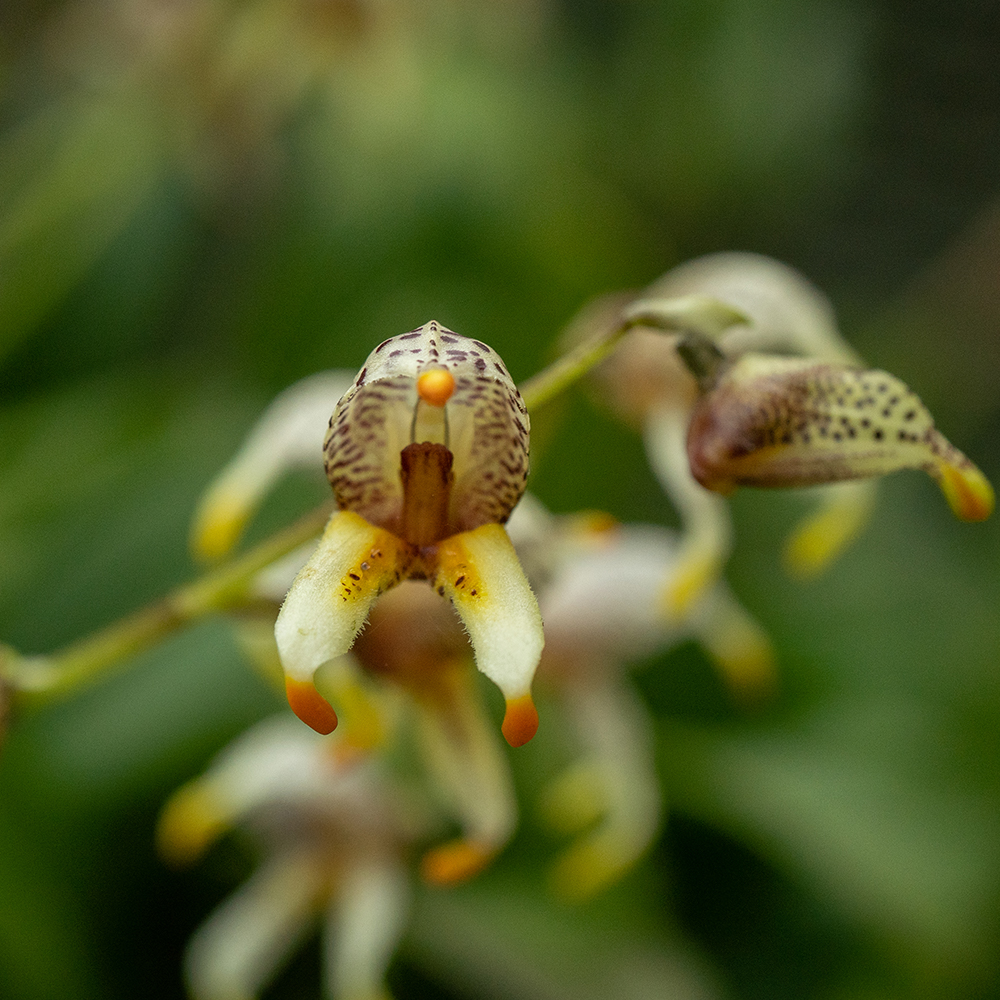Bladderwort (Utricularia spp.)
 Dainty U. bisquamata flowers.
Dainty U. bisquamata flowers.
Utricularia is a genus of over 220 species of carnivorous plants, collectively known as bladderwort. These diverse and highly evolved plants thrive in nutrient-poor, marshy fields or bog lakes. The genus name, Utricularia, is derived from the Latin word ‘urtriculus,’ meaning ‘little bag’, referring to the tiny underground sacs-like traps of these plants. It belongs to the bladderwort family, Lentibulariaceae, which also includes two other carnivorous plant genera: Pinguicula – the butterworts, and Genlisea – the corkscrew plants.
Utricularia is a genus of over 220 species of carnivorous plants, collectively known as bladderwort. These diverse and highly evolved plants thrive in nutrient-poor, marshy fields or bog lakes. The genus name, Utricularia, is derived from the Latin word ‘urtriculus,’ meaning ‘little bag’, referring to the tiny underground sacs-like traps of these plants. It belongs to the bladderwort family, Lentibulariaceae, which also includes two other carnivorous plant genera: Pinguicula – the butterworts, and Genlisea – the corkscrew plants.
 U. bisquamata (shorter, smaller flowers) and another species of carnivorous plant from the same family, butterwort (Pinguicula sp.; taller, round flowers) in bloom in the Lost World of Cloud Forest.
U. bisquamata (shorter, smaller flowers) and another species of carnivorous plant from the same family, butterwort (Pinguicula sp.; taller, round flowers) in bloom in the Lost World of Cloud Forest.
Native to waterlogged soils and stream banks in southern Africa, Utricularia bisquamata is one of many carnivorous plants species at Gardens by the Bay. Above ground, they have a creeping mat of tiny, blade-like leaves and light purple flowers with a bright yellow upper lip, but the most interesting parts of the plant are below ground. Minute, bladder-shaped traps growing on underground stems are hair-triggered. Once stimulated by movement, trigger hairs cause a trapdoor on the bladder to open, sucking in and trapping passing soil invertebrates, which are then digested and absorbed by the plant.
In recent years, bladderworts and other carnivorous plants have been popular among gardeners and plant lovers due to their attractive flowers and adaptability to indoor cultivation. Come marvel at the bladderworts and other carnivorous plants in the Lost World of Cloud Forest now that both our conservatories are open again!
Written by: Arthur Voo, Senior Research Executive (Research and Horticulture)
Arthur has been working closely with plants for more than 10 years, whether in a park, nature reserve or glasshouse. These days, if he isn’t taking care of plants in the glasshouses, he likes to spend his time hiking and looking for interesting plants in the wild.


-/1000x1000-thumb-horned-tulip-01.jpg)
